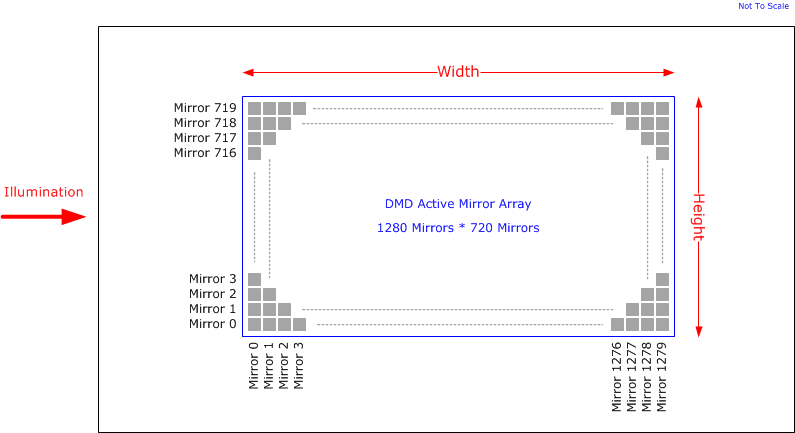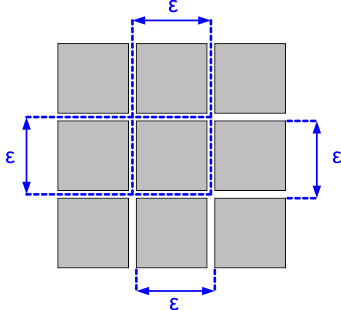DLPS099C february 2018 – july 2023 DLP3010
PRODUCTION DATA
- 1
- 1 Features
- 2 Applications
- 3 Description
- 4 Revision History
- 5 Pin Configuration and Functions
-
6 Specifications
- 6.1 Absolute Maximum Ratings
- 6.2 Storage Conditions
- 6.3 ESD Ratings
- 6.4 Recommended Operating Conditions
- 6.5 Thermal Information
- 6.6 Electrical Characteristics
- 6.7 Timing Requirements
- 6.8 Switching Characteristics
- 6.9 System Mounting Interface Loads
- 6.10 Micromirror Array Physical Characteristics
- 6.11 Micromirror Array Optical Characteristics
- 6.12 Window Characteristics
- 6.13 Chipset Component Usage Specification
- 7 Detailed Description
- 8 Application and Implementation
- 9 Power Supply Recommendations
- 10Layout
- 11Device and Documentation Support
- 12Mechanical, Packaging, and Orderable Information
Package Options
Mechanical Data (Package|Pins)
- FQK|57
Thermal pad, mechanical data (Package|Pins)
Orderable Information
6.10 Micromirror Array Physical Characteristics
| PARAMETER | VALUE | UNIT | ||||
|---|---|---|---|---|---|---|
| Number of active columns | See Figure 6-15 | 1280 | micromirrors | |||
| Number of active rows | See Figure 6-15 | 720 | micromirrors | |||
| Micromirror (pixel) pitch | See Figure 6-16 | 5.4 | µm | |||
| Micromirror active array width | Micromirror pitch × number of active columns; see Figure 6-15 | 6.912 | mm | |||
| Micromirror active array height | Micromirror pitch × number of active rows; see Figure 6-15 | 3.888 | mm | |||
| Micromirror active border | Pond of micromirror (POM)(1) | 20 | micromirrors/side | |||
(1) The structure and qualities of the border around the active
array includes a band of partially functional micromirrors called the POM. These
micromirrors are structurally and/or electrically prevented from tilting toward
the bright or ON state, but still require an electrical bias to tilt toward
OFF.
 Figure 6-15 Micromirror Array Physical
Characteristics
Figure 6-15 Micromirror Array Physical
Characteristics Figure 6-16 Mirror (Pixel) Pitch
Figure 6-16 Mirror (Pixel) Pitch